 |
New York Architecture Images- Lower Manhattan SHRINE OF ST. ELIZABETH ANN BAYLEY SETON and James Watson house. Landmark Top Ten New York Churches |
||
|
architect |
James Watson house: James McComb, Jr. Shrine: Shanley & Sturges |
||
|
location |
7 State Street, between Pearl and Whitehall Streets. | ||
|
date |
James Watson house: 1794-1806, Shrine: 1965 | ||
|
style |
Georgian | ||
|
construction |
brick | ||
|
type |
Church, House | ||
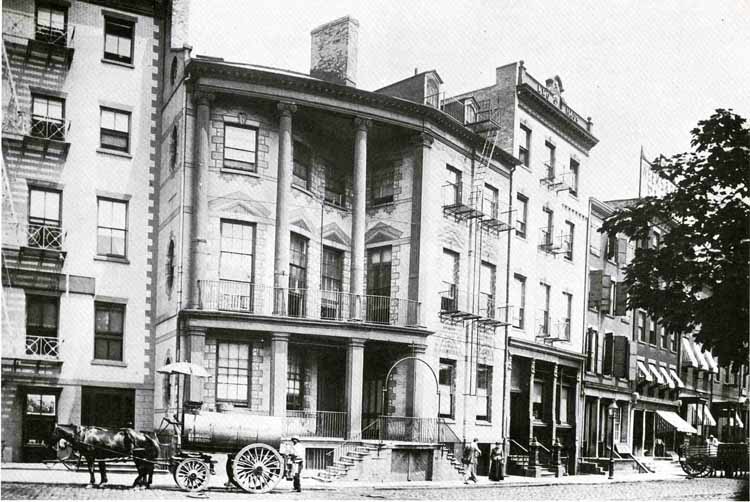 |
|||
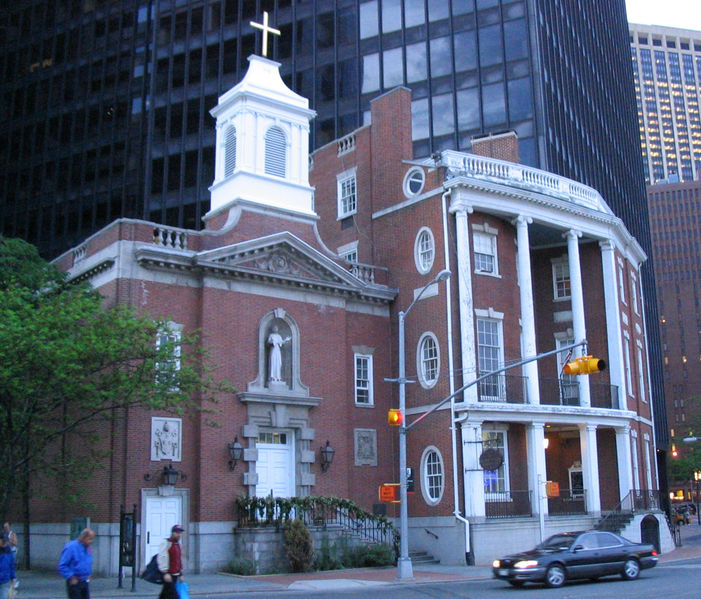 |
|||
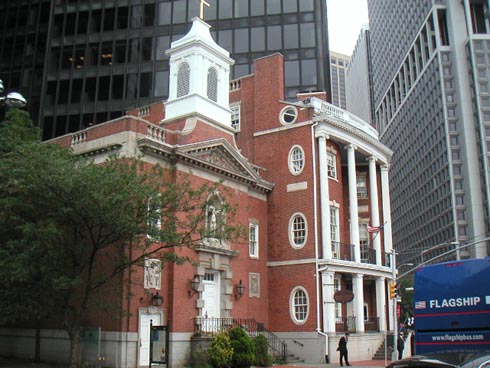 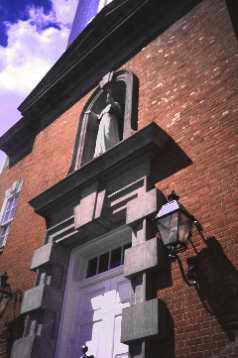 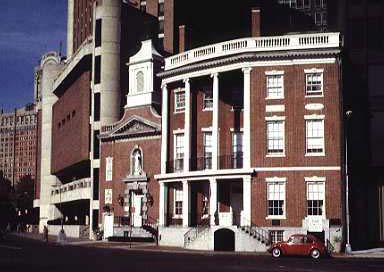 |
|||
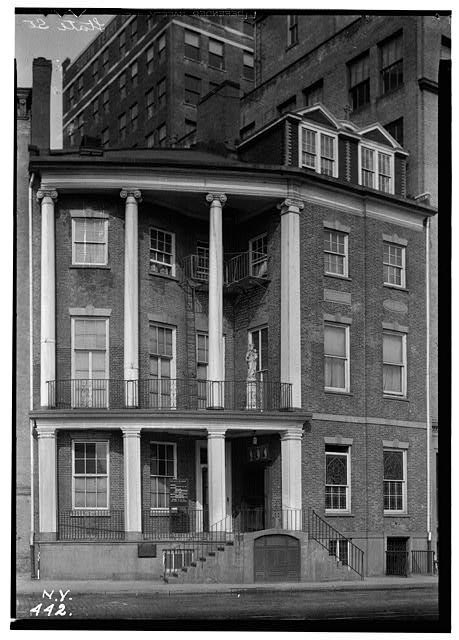 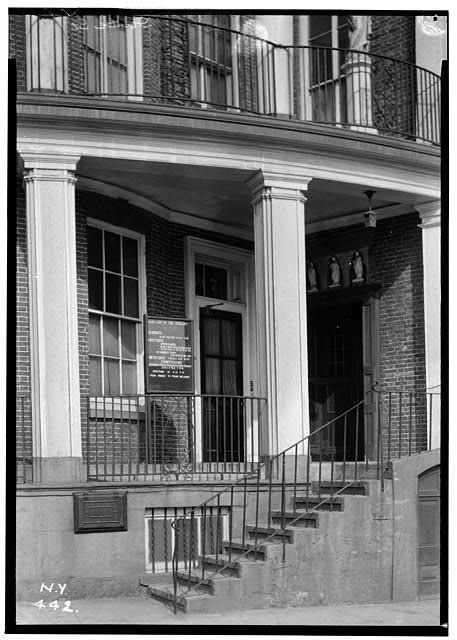 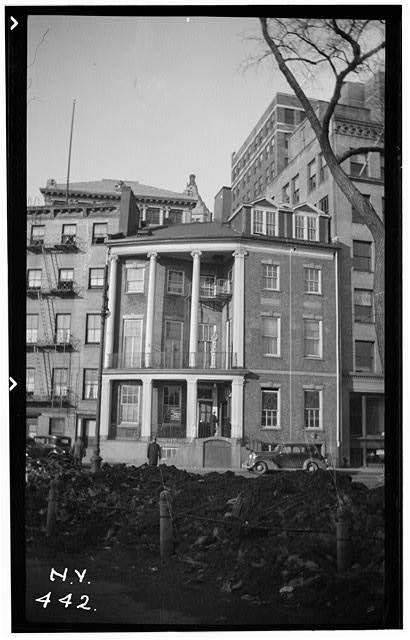 |
|||
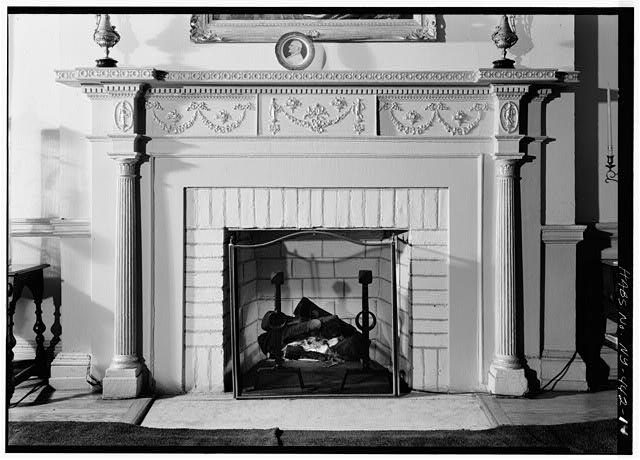  |
|||
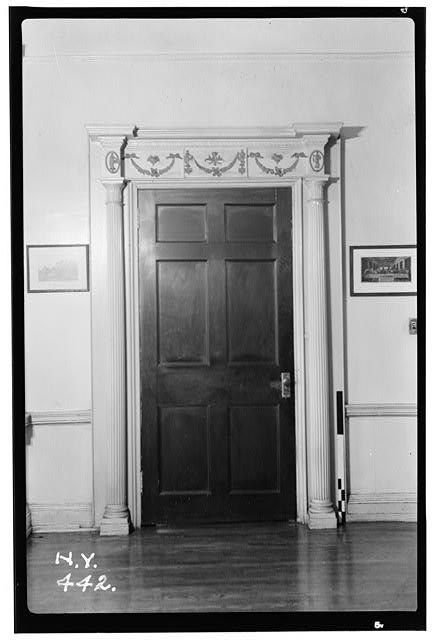 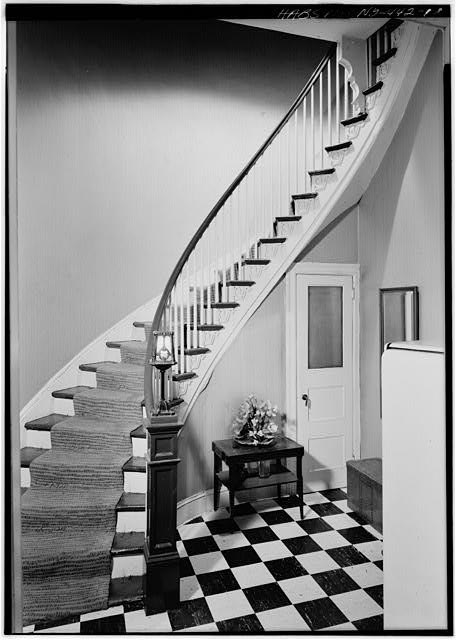 |
|||
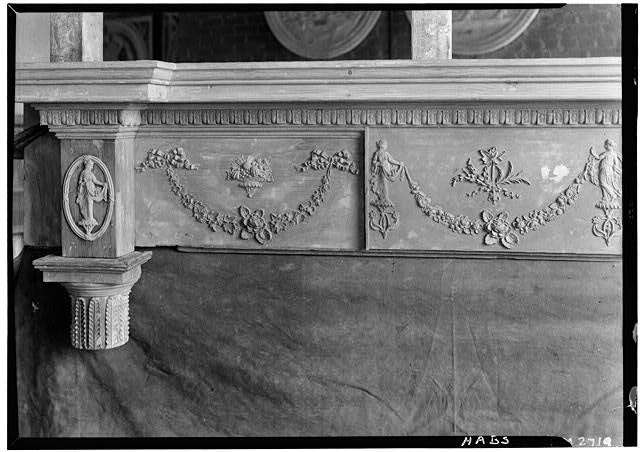 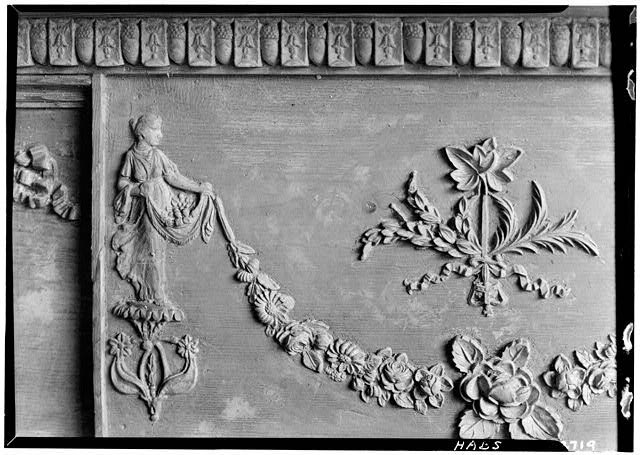 |
|||
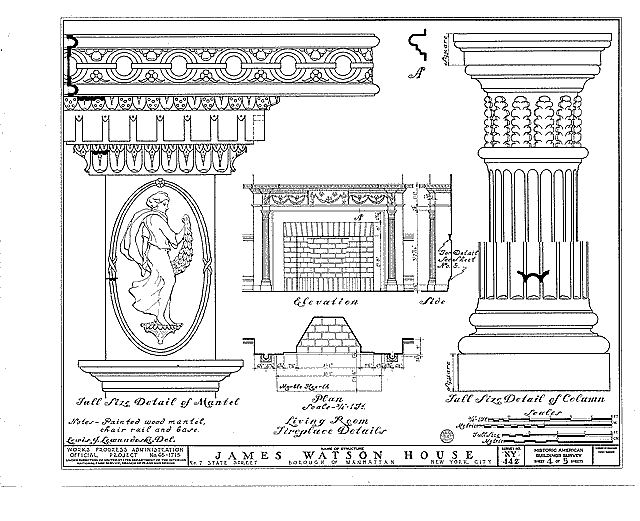 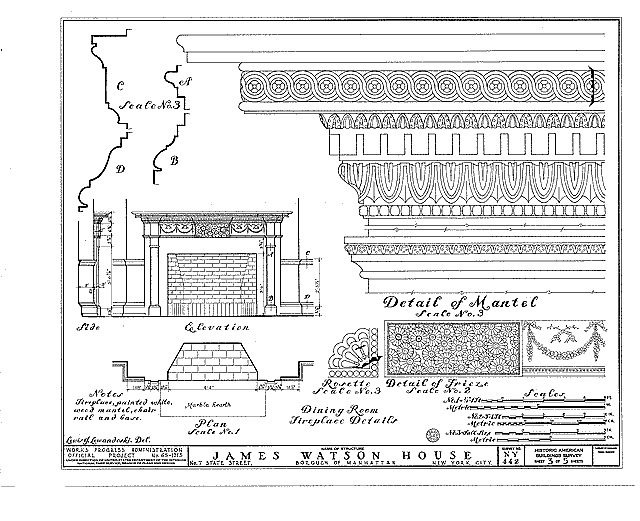 |
|||
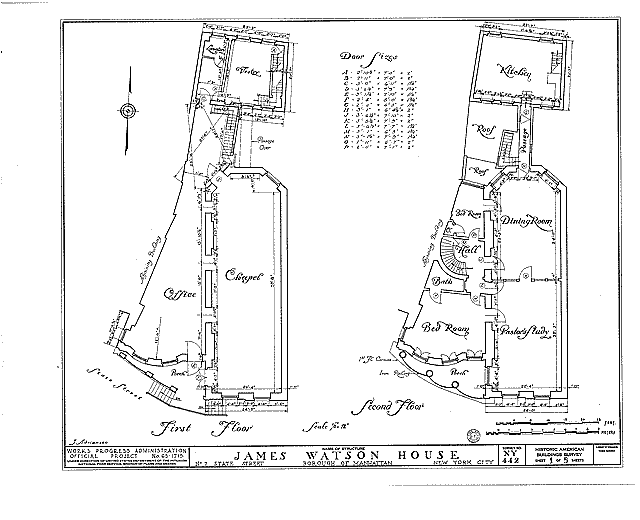 |
|||
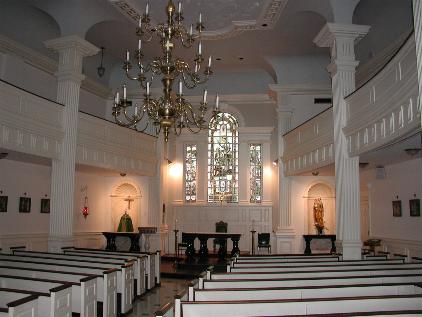 |
|||
Image thanks to
www.churchcrawler.co.uk
|
|||
|
7 State Street (between Pearl and Whitehall Sts) 1793-1806, eastern portion architect unknown; the western half attributed to James McComb, Jr. architect Although a contemporary building, the shrine was designed in the Georgian Style to match the adjacent Watson House. This small chapel is dedicated to Elizabeth Seton, the founder of the Catholic order of Sisters of Charity, who was canonized in 1975. A close comparison of the Shrine with the Watson House reveals the material, technical and stylistic differences between the 18th century residence and its historicist 20th century neighbor. Once home of wealthy merchant James B. Watson, this typical Federal Style rowhouse is the only extant residence in this area. Like other merchants of 18th and early 19th century New York City, Watson chose to live near the river in order to have an unobstructed harbor view and to be in close proximity to his shipping interests. The eastern portion (1793) which follows the line of the street was executed by an unknown architect, while the curved western portion (1806) has been attributed to the sophisticated architect, John McComb Jr. Following the Civil War, the house was purchased by Irish immigrant Charlotte Grace O'Brien to serve as the Mission of Our Lady of the Rosary, a waystation for young immigrant girls. The Watson residence is the sole survivor of the elegant Federal style row houses that lined State Street and lower Broadway in the late eighteenth and early nineteenth centuries. The original part of the Watson house is the eastern half; the porticoed western half, built in 1806, is ascribed to James McComb, Jr., the first native-born architect, is a brilliant solution to the problem of fitting a rowhouse to an irregular site and letting light into a deep floor plan. When the Watson residence was built it overlooked New York harbor across a promenade with unobstructed view of the hills of Staten Island, New Jersey and Brooklyn. State Street was a popular choice for the homes of prosperous sea captains and merchants who could view the ships that abounded in the harbor. Today the Watson house is occupied by the Rectory of the Church of Our Lady of the Rosary. Once part of a row of late-eighteenth-century mansions, this sole survivor recalls the time when New York's wealthiest families lived at Manhattan's southern tip. With their northward exodus, the building functioned as a hotel until 1886, when it became the Mission of Our Lady of the Rosary, a home for immigrant girls. A 1965 restoration of the mission removed the dormers and added a railing at the roofline. With the 1940 demolition of the El and the 1960s proliferation of box-and-plaza skyscrapers, the mansion now seems stranded on a too-wide street amidst oversized neighbors. In 1975, the mission was dedicated as the Rectory of the Shrine of St. Elizabeth Seton, after America's first canonized saint, who was born on Staten Island. SAINT ELIZABETH ANN BAYLEY SETON (1774-1821) A statue of Saint Elizabeth Seton is outside the building, which is currently the rectory of her shrine. Mother Seton was the first American-born person to be canonized, by Pope Paul VI in 1975.
|
|||
|
Elizabeth Ann Seton Foundress and Educator Born August 28, 1774(1774-08-28), New York City Died January 4, 1821 (aged 46), Emmitsburg, Maryland Venerated in Roman Catholic Church Beatified March 17, 1963 by Pope John XXIII Canonized September 14, 1975 by Pope Paul VI Feast January 4 Patronage Catholic Schools; Shreveport, Louisiana; and the State of Maryland Saints Portal Elizabeth Ann Bayley Seton (August 28, 1774 – January 4, 1821) was the first native-born United States citizen to be canonized. Biography Site where she once lived in New York City (at 7 State Street) is now a shrine in her honor.She was born to the prominent Bayley family of New York City, and raised in the Episcopal Church. At the age of nineteen, she married William Magee Seton, a wealthy business man. Five children were born to the marriage, which ended with her husband's death in 1803, shortly after becoming bankrupt. Two years later she converted to Roman Catholicism, on March 14, 1805. One of her half-nephews, James Roosevelt Bayley, would later become Archbishop of the Archdiocese of Baltimore. Owing to her conversion she lost the support of her friends and family. After some trying and difficult years, Elizabeth was able to establish a community in Emmitsburg, Maryland dedicated to the care for the children of the poor. This was the first religious community of apostolic women founded in the United States. The remainder of her life was spent in leading and developing the Sisters of Charity of St. Joseph's which she had founded, along with the Sulpician priests of Baltimore. Today six independent religious communities trace their roots to the humble beginnings of the Sisters of Charity in Emmitsburg, Maryland. She was described as a charming and cultured lady. Her connections to New York society and the accompanying social pressures to leave the life she had created for herself did not deter her from embracing her religious vocation and charitable mission. She established St. Joseph's Academy and Free School in order to educate young girls to live by religious values. The greatest difficulties she faced were actually internal, stemming from misunderstandings, interpersonal conflicts, and the deaths of two daughters, her loved ones, and young sisters in community. She died of tuberculosis at the age of 46 in St. Joseph's House (the White House), Emmitsburg. Legacy of Charity Elizabeth Seton helped found the Society for the Relief of Poor Widows with Small Children, New York City's first private charity organization. In 1810, Seton established Saint Joseph's Academy and Free School in Emmitsburg, Maryland, a school dedicated to the education of Catholic girls, at the invitation of Samuel Sutherland Cooper. Cooper was a wealthy convert and seminarian who knew of the Catholic settlement near Emmitsburg and the newly established Mount St. Mary's College and Seminary, being begun by Father John Dubois and the Sulpicians. Dubois would later become Bishop of New York. St. Joseph's Academy developed into Saint Joseph College which closed in 1973. Elizabeth founded the first religious community of apostolic women of the United States, the Sisters of Charity of St. Joseph's, in the Archdiocese of Baltimore. Dedicated to following the will of God, Elizabeth Ann had a deep devotion to the Eucharist, Sacred Scripture, and the Virgin Mary. The 23rd Psalm was her favorite prayer throughout her life. She was a woman of prayer and service who embraced the apostolic spirituality of Saint Louise de Marillac and Saint Vincent de Paul. "We must pray literally without ceasing—without ceasing—in every occurrence and employment of our lives . . . that prayer of the heart which is independent of place or situation, or which is rather a habit of lifting up the heart to God as in a constant communication with Him." Elizabeth Ann Seton. Recognition On December 18, 1959, Elizabeth was declared Venerable by the Sacred Congregation of the Catholic Church. She was beatified by Pope John XXIII on March 17, 1963, and canonized by Pope Paul VI on September 14, 1975, making her the first native-born United States citizen to be canonized. St. Elizabeth Ann Seton is popularly considered a patron saint of Catholic schools. Her feast day is January 4. Her name appears on the front doors to St. Patrick's Cathedral, New York, describing her as a "Daughter of New York". Her legacy of charity lives on in her spiritual daughters who collaborate through the Sisters of Charity Federation. The National Shrine of St. Elizabeth Ann Seton in Emmitsburg, Maryland, is open to the public. Namesakes Mother Seton School, a Catholic elementary school in Emmitsburg, Maryland, traces its roots directly to St. Joseph's Academy and Free School, founded by St. Elizabeth Ann in 1810. There is also a Catholic homeschooling program called Seton Home Study School. A Catholic home-school support center called Living Saints Tutorial Program in New Manila, Quezon City, specializes in assisting students in the Philippines who are using the Seton Home School Study curriculum. Several schools have been named for Seton: Seton Hall Preparatory School in West Orange, NJ Seton La Salle High School in Pittsburgh, PA College of Saint Elizabeth and Academy of Saint Elizabeth both on the same campus in the Morris Township, New Jersey Seton Hall University in South Orange, New Jersey Seton Hill University in Greensburg, Pennsylvania St. Elizabeth Ann Seton School in Keller, Texas St. Elizabeth Ann Seton Grade School in Carnegie, Pennsylvania Elizabeth Ann Seton School in Nepean, Ontario Elizabeth Seton High School in Bladensburg, Maryland Seton Catholic High School in Chandler, Arizona Seton Catholic Central School in Plattsburgh, New York Elizabeth Ann Seton School in Shrub Oak, New York Seton Keough High School in Baltimore, Maryland (formerly Seton High School and Archbishop Keough High School which merged in 1988) Seton Catholic Elementary School and Seton Catholic High School in Richmond, Indiana Seton Catholic College Hilton, Western Australia (formerly Saint Brendons College and Emillia De Viliar College which merged in 1990) Elizabeth Seton School - Main in Las Piñas City, Philippines Elizabeth Seton School - South in Imus, Cavite, Philippines. Seton High School (Cincinnati, Ohio)- Price Hill neighborhood of Cincinnati, OH (formerly Mount St. Vincent Academy, dedicated to Seton in 1927) Mother Seton Regional High School in Clark, New Jersey Seton College [1]in ,Mt. Gravatt East, Queensland, Australia |
|||